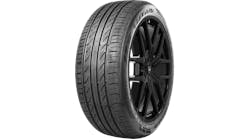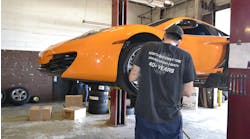The Abu Dhabi Grand Prix starts in the late afternoon and ends in the evening, meaning that unusually track temperatures tend to fall as the race goes on. Conditions in FP2, which began at 5pm, will be representative of the race but the earlier FP1 followed a different pattern, with track and air temperatures rising.
This had an effect on tire performance, with the two softest tires in the range nominated for the final grand prix of the year on the low abrasion Yas Marina circuit: P Zero Yellow soft and P Zero Red supersoft. In the second session, there was some light graining with the supersoft only on the front-right tire in particular.
The teams concentrated on the afternoon session in order to determine qualifying and race set-up, on both compounds with high and low fuel loads. The information gained will decide the strategy used for the race, with two pit stops looking like the most likely option at this point for the majority of competitors. The quickest time of the day was set by Mercedes driver Lewis Hamilton in FP2 on the supersoft tire, who set a benchmark of 1m42.113s.
The performance gap between the two compounds is currently around 1.2 seconds, but this is likely to come down to about a second over the rest of the weekend as the track rubbers in and evolves. The two championship protagonists dominated the free practice sessions, with Hamilton and Nico Rosberg finishing first and second in each one.
Paul Hembery: “We’ve got off to the start we expected in Abu Dhabi: the race that will decide the world championship. Wear and degradation is low on the soft tire, which we expect to be the main race tire. With a gap of just over a second between the two compounds, we think that the supersoft will be the best choice for qualifying, but this time difference leaves plenty of strategy options open: with perhaps some interesting gains to be made by running the reverse strategy and using the soft tire first at the start of the race.”


